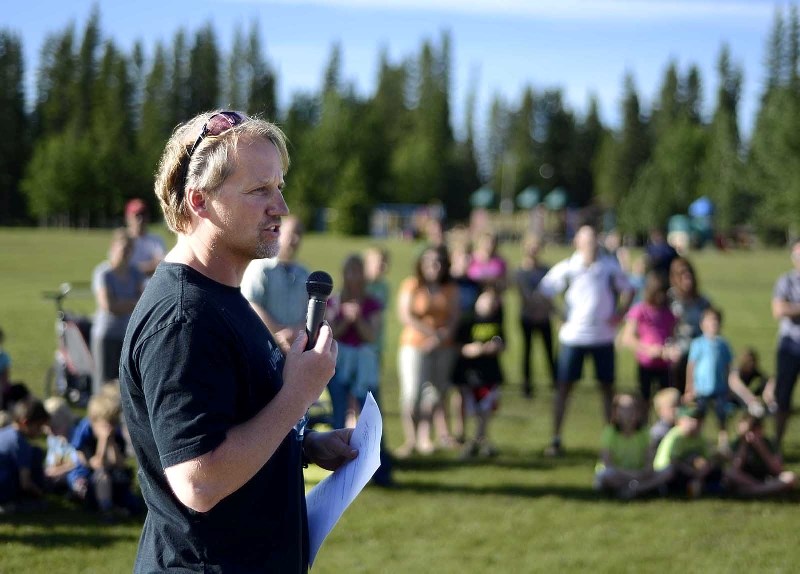The effects of the heavy rainfall is still being felt on the Stoney Nakoda First Nation reserve, as more than a thousand residents have been displaced.
As of July 1, the Stoney Nakoda nations have about 225 homes that have been affected by the rain and approximately 1,600 people have been evacuated from their homes, according to Heather Carnahan, Stoney Tribal administrator.
While the level of the Bow River rose during the stormy weather, much of the damage on the reserve — particularly near Morley — was caused by the heavy rainfall that washed away roadways, flooded basements and backed up sewers.
Carnahan said the cleanup and rebuilding process has already begun, with water, damaged contents, drywall and debris being removed from the homes.
“It’s very difficult right now to estimate timelines,” she said. “The roadways are being assessed and some rebuild has begun. It is a lot of damage.”
Carnahan said the Stoney Nakoda Nation has applied for funding through the province’s Disaster Recovery Program.
The Morley Community School was transformed to an evacuation centre June 20 and remains as such. Originally a community effort, the centre was signed over to the Canadian Red Cross June 26.
“We have nation members here who have been here since Day 1 and really have done a good job,” said Chief Darcy Dixon of the Bearspaw First Nation. “The call was made after we knew how serious the disaster was becoming…. The Red Cross has access to resources that we don’t. I think by them being able to direct or provide some of the things we need out here, or the things members who are displaced need, at least, they can direct us to the proper people and resources.”
Donations and volunteers are still being welcomed at the evacuation centre.
Meanwhile, Rocky View County (RVC) officials lifted the state of emergency for the county June 26. But, like on the reserve, the road to recovery is going to be a long one.
While much of the initial examinations and monitoring has already been completed, Grant Kaiser, RVC’s communications manager, said the surveying of affected areas would be ongoing.
“Right now, we’re still out assessing the communities,” he said. “We do not have cost estimates for cleanup yet.”
As of July 2, RVC was not able to put an accurate figure on the number of residents and homes impacted by the flooding.
The community of Bragg Creek continues to pull together, as evidenced at the June 29 “Flood of Relief” event at the local community centre. Hundreds of community members, supporters and flood responders walked through the doors of the centre for the evening of live music, keynote speakers and mingling.
The evening collected about $20,000 to support local flood victims, said Michele McDonald, who helped to organize the event. Community stakeholders will disperse these funds, she added.
“We’re taking Bragg Creek back,” said McDonald. “It’s resonated that this is a community. It’s very ‘old Bragg Creek-style’ — neighbours pulling together.”
Residents who have questions about — or need help with — disaster recovery applications are being directed to Calgary, where provincial officials will be on hand to provide assistance.
Disaster financial assistance staff will be at McMahon Stadium’s Red and White Club and Mount Royal University’s Roderick Mah Centre for Continuous Learning. Both locations will run until July 7, from 8 a.m. to 8 p.m.
The Disaster Recovery program registration will be available in Bragg Creek for residents until July 11.
Bragg Creek’s neighbours in the community of Redwood Meadows are well on their way to recovery, according to Mayor John Welsh.
“We’re still without potable water — which we’re hoping to have by this week — but the rest of the cleanup is pretty much taken care of,” he said on July 2.
The townsite’s berm has been reconstructed, but will likely need some reinforcing, he remarked. He added that the rebuilt berm would be “sufficient” for at least the next year.
For Welsh, he said the amount of land lost has been worrisome. While he said an official measurement hasn’t been recorded, he estimated the community lost between 20-40 acres.
Plans are in the works to meet with the Alberta government to discuss recovery and funding for the small townsite.




